Mississippi - Columbus - Part 2
Columbus - Driving Tour Part 2
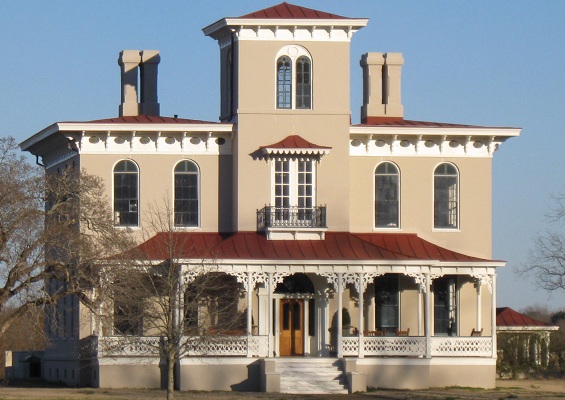
From the tiny Max Andrews Home, continuing half a mile down 9th St. South, across the railroad tracks, on the left is the completely different Rosedale, 1856. This house sits on the largest property of any old mansion in the city since it's so far outside downtown, and is considered one of the finest examples of Italianate architecture in Mississippi.
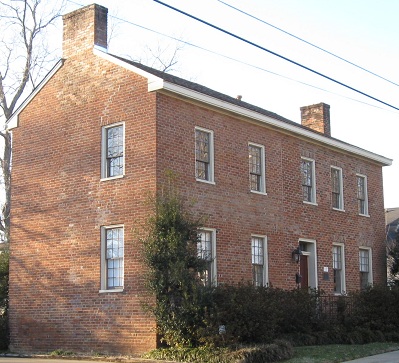
Coming all the way back into town by turning right on 17th Ave. South at the end of 9th St., making another right on 7th St. South, and proceeding ten blocks, on the left is the Cartney-Hunt House, 1828, the oldest brick house in northern Mississippi and one of the few examples at all in that area of Federal period architecture. If you look closely, you can see a line through the house just left of the front door. To the right of the line, this was originally a "Swedish" style house, but the remainder built in 1847 converted it to Federal style (I assume through addition of a chimney and creation of some sort of internal symmetry - you can stay in the inn there to find out).
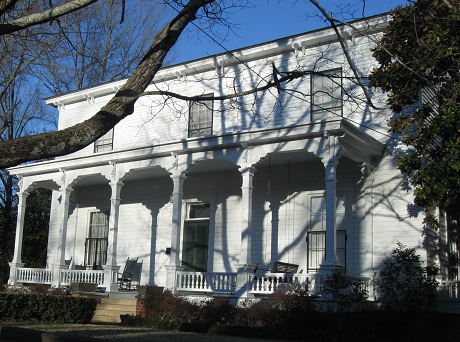
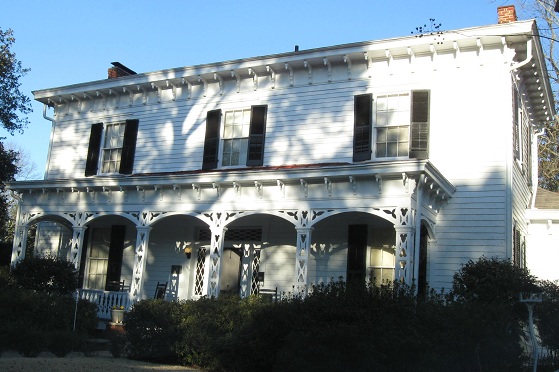
To the right on the next corner is the Amzi Love House, 1848, but before it I found a house not listed in the pamphlet that looks perfectly in place with the others. It must date to just after the Civil War, based on the architecture. The Amzi Love House in the latter photo is an Italianate (gee, there's a lot of that going around) cottage that combines Greek Revival and Gothic architecture. The kitchen was a separate structure until 1920, and the other out-buildings (smokehouse and dairy) are still standing.

Proceeding one block and turning left on College St., on the right is the First United Methodist Church, 1860 and not even completed until after the war. It houses the oldest congregation in Columbus and provided wartime services including being a hospital and an ammunition plant and donating tin from its roof for Confederate supplies.
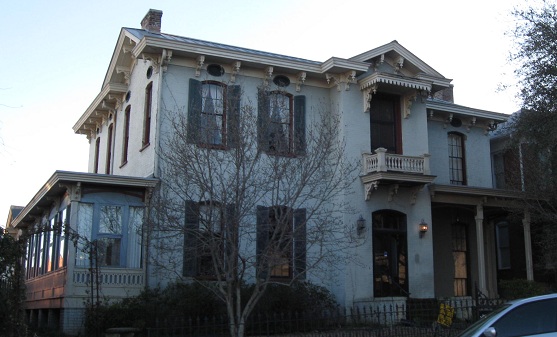

On the next block and to the left is Arbor House, 1841, an original house that remains intact with an Italianate townhouse built around it. The blues sign is just after it along the route. The tiny logo on top says in even tinier writing, "EST 2003," in case you thought the sign itself was in any way historic.

Continuing across 5th St. South and turning left on 4th St. South runs along the side of, as I promised in Part 1, St. Paul's Episcopal Church, 1860 and therefore the second-oldest congregation. The Gothic building has an authentic, signed Tiffany window among its many stained glass fixtures. The rector of this church in the early 1900s was Tennessee Williams' grandfather, as I described on the main page.

Turning right onto 5th Ave. South, on the corner is the Barry House, 1838, still featuring original cypress beams and pine flooring. Guess what, it's Italianate. William Sullivan Barry was a Mississippi House of Representatives speaker, U.S. Congressman, and presided over the 1860 secession convention.
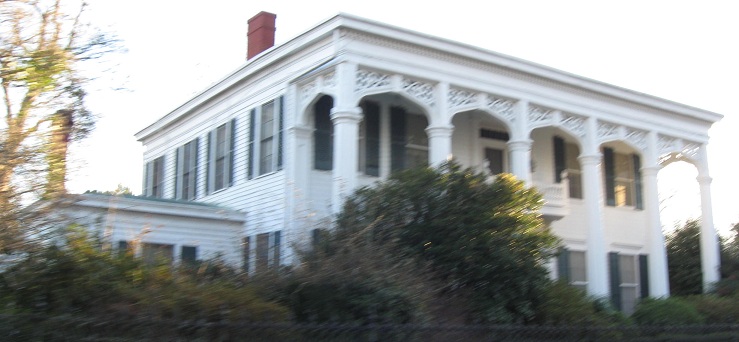
Turning right onto 3rd St. South and left onto 3rd Ave. South after two blocks, in the middle of the block on the left is Errolton, 1840. It features double parlors with double mirrors for infinite reflections and a ghost named Miss Nellie. It still has its original cast-iron fence and typifies "Columbus Eclectic" architecture.
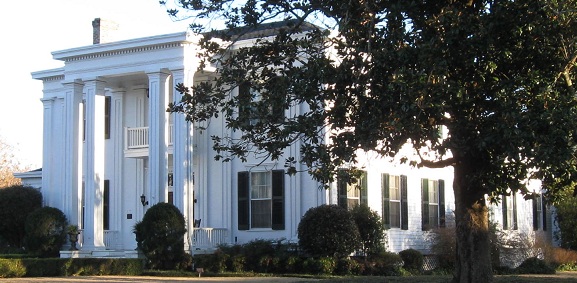
Turning left onto 2nd St. South, on the corner of 4th Ave. South is Belle Bridge, 1856, a Greek Revival house whose arcaded entrance is surrounded by Doric columns.
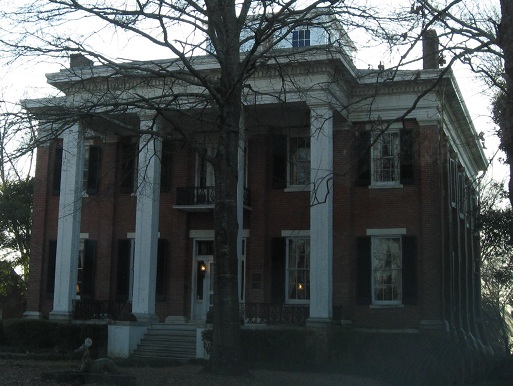

Continuing two blocks, on the right is Riverview, 1854 and on the left is the Pratt-Thomas Home, 1833. Riverview is a Tennessee Federal house of handmade brick with identical front and rear entrances. Inside, a graceful spiral staircase rises to a cupola with floor-to-ceiling stained-glass windows and a captain's walk. It was modeled after the architect's home, Camellia Place (as seen on Part 1 of the tour). The Pratt-Thomas Home is a classic raised cottage whose front columns were hewn from single logs. Inside is a double stairway, and out back are formal gardens and an original kitchen.
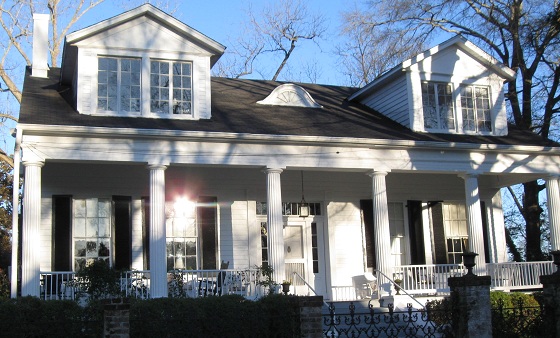
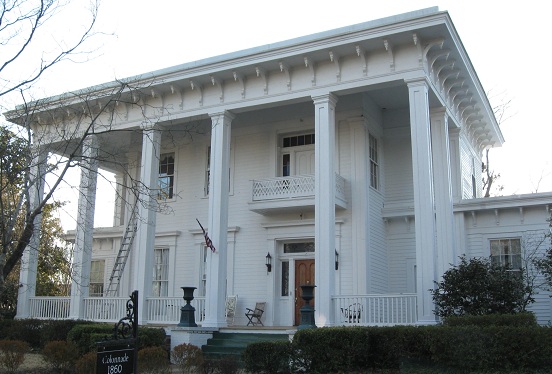
One block later, on the left is Lehmquen, 1838 (another raised cottage) and on the right is the Colonnade, 1860. The asymmetrical placement of the Colonnade's entrance and the bracketed roof cornice show the transition between Greek Revival and Italianate architecture. The upright framework of the house was assembled with wooden pegs, and the original outdoor kitchen is now a guest house.

Turning right on 7th Ave. South, on the left is White Arches, 1857. Finally, the pamphlet explains what "Columbus Eclectic" is: a combination of Gothic, Greek Revival, and Italianate elements. The central octagonal tower has an observatory on the top floor and a cast-iron balcony that, according to legend, caused the death of Mary Oliver when she went outside to catch some air during a cheering-up party (her "beau," or as they call them now, "boy toy," was going to war). There would be great irony if he survived, but since this is a legend, there's no mention of who the man may have been.
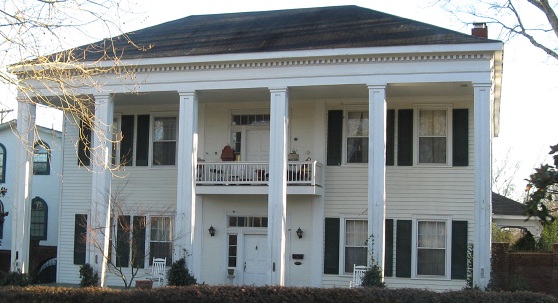
Proceeding one block and turning left on 1st St. South, then left again on 8th Ave. South, comes to Homewood, 1836. This Greek Revival house, influenced by Classic and Roman Revival influences, was moved here from Main St. in 1975 for reasons unexplained. The pillars were heightened as it was reconstructed from its two halves that were moved separately (really, what an awful thing to do). Crystal chandeliers and brass door hardware remain.
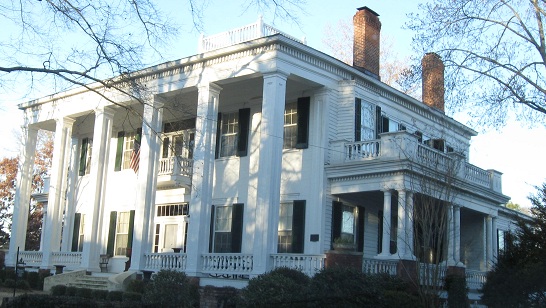
Turning left on 2nd St. South, right on 7th Ave. South, and left again on 3rd St. South, on the right is Whitehall, 1843. This pillared mansion was built near the street despite having the entire block to itself at the time. Elsewhere on the property were gardens, stables, and servants' quarters.
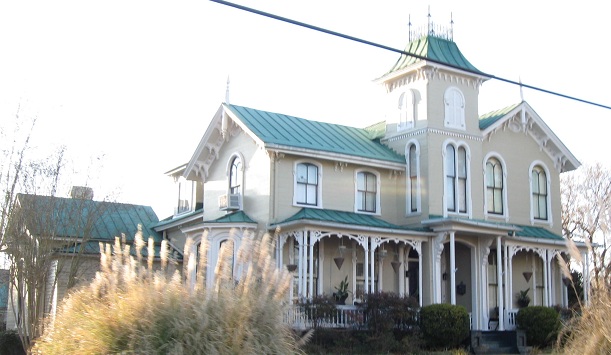
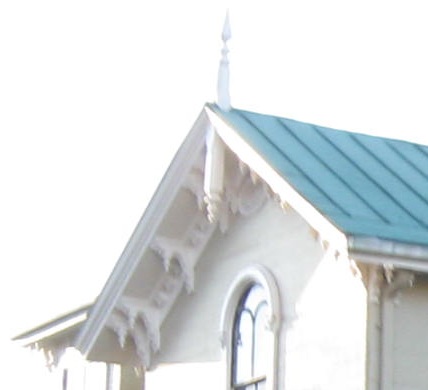
In the 400 block of 3rd St. South and to the left is this Victorian home, 1869. The pamphlet says there are many Victorian houses along this street, apparently all postwar (that sounds better than postbellum). This one, a replica of one on the Hudson River, still has some Italianate and Gothic features, as well as some elements of Mansard architecture. It was constructed with wooden pegs.

On the next corner to the right after more Victorian houses is Corner Cottage, 1837, representing the transition from late Federal to Greek Revival styles. It was originally a two-room home that was added to over time. This home shares a builder with Leighcrest from Part 1 of the tour, Dr. Aurelius N. Jones, a local physician (and apparently builder) who became a state representative.
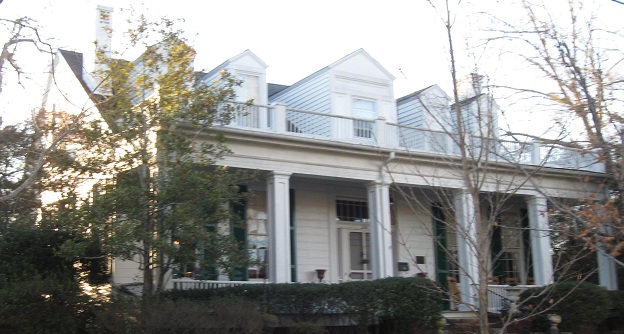

The tour continues back on 3rd St. South to Tennessee Williams' house, closing the circle of the tour. Along the way, on the left at the corner of 3rd Ave., is Twelve Gables, 1838. This Greek Revival Victorian cottage is notable for being the site of the genesis of Decoration Day by four local women, as explained by the sign (which I saw on the way from the Barry House to Errolton, thus showing you how convoluted the tour route is). Believe it or not, the sign is correct, Decoration Day honored soldiers on both sides of the War, something I never would have thought given the lingering animosity of the South through the Reconstruction era. A feature of the house is the ashlar stone facade, a masonry pattern cut into the wood, which was originated by George Washington at Mount Vernon.
Back to Part 1 of the tour
Back to Columbus main page
Back to Mississippi Non-Roads
Back to Non-Roads main page





















